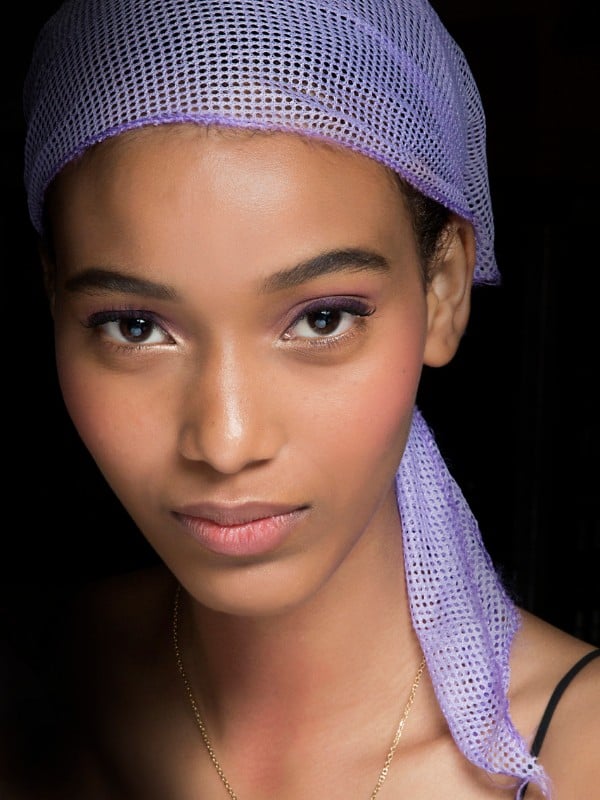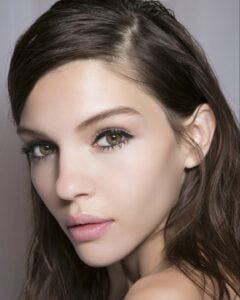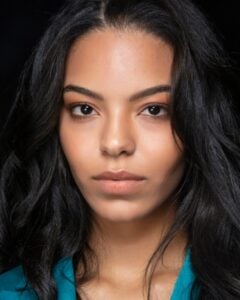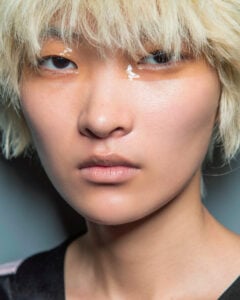With all the potential terms and practices out there, and more trends and products emerging on the daily, it’s hard to keep track of what’s what in the world of beauty. An approach to personal skincare which is likely influenced by the recent but marked shift in consumer attitudes regarding health and wellness, skincare ritual is something we wanted to know more about.
From the outside, a skincare routine looks much the same as a skincare ritual. But the difference between them is substantial. That difference lays in the intention behind the actions. That is to say, a ritual involves intention, whereas a routine lacks that important, defining characteristic.
For example, a skincare routine might involve cleansing your face, applying a toner, and moisturizing every night before bed. Turning this into a ritual involves recognizing, and celebrating in some way, that what you’re doing is a form of self-care. That mindful intention behind what you’re applying, rinsing, and massaging is at the heart of a skincare ritual.
To find out more about how rituals differ from routine, how this is changing the way we think of our skincare, and what the perceived benefits are, we sat down with Kellie Collis, founder of Salt by Hendrix, and Sadie Adams, healer and founder of Take Care Face & Body. They gave us all the details on this newcomer to holistic skincare approaches, and we’re sharing them all with you below.
FROM ROUTINE TO RITUAL
Treating your skincare as something more than routine is not a new idea. While the concept may be relatively new to Western consumer markets, there are practices and traditions that we could classify as ritualistic and which are thousands of years old.
In Ancient Egypt, wealthy Egyptian women lovingly prepared their skin before applying their extensive and infamous makeup. They luxuriated in milk baths and exfoliated with dead sea salts. In the Ayurvedic traditions of the Indian subcontinent, massaging oneself with fragrant and calming oils or fixing adornments to the body were ways of honoring the physical and energetic self.
The skincare practices of the more recent past are influenced by everything from backward notions of what constitutes “beauty” to busy lifestyles that leave little downtime for self-care. These focus on the end result of your personal routine, rather than the moments in-between.
But as the skincare industry increasingly embraces wellness and holistic approaches to beautification, the concept of (re)turning routine into ritual gathers momentum.
Today, as in the past, we are recognizing more and more that how we eat, how we live, and how we feel all have an impact on how we look. “I think the trend is going in this direction as our culture returns to a more natural and less homogenized beauty esthetic”, Adams affirms.
WHAT IS A SKINCARE RITUAL?
So, what exactly makes a skincare routine different from a skincare ritual? According to both of our experts, ritual implies little more than adding thought into what you’re doing to and for your skin.
“Everyone knows they need to wash their face and moisturize but often the ‘why’ is missed and that comes from understanding your own skin, what drives how it can feel day to day,” says Collis. “Caring for your skin depending on how it feels rather than putting on the night cream the same way you have done for the past 12 months is the first step in transitioning between skincare and wellness.”
Similarly, for Adams, ritual is “…something that brings one back into the contemplation of self-care in service to self-realization.” She says that skincare can be thought of as self-care if we “add embodiment, breath, humility and respect to the process,” and we can enhance the power and efficacy of what we use on our skin by “slowing down, becoming more sensitive, and honoring the intelligence and medicine of the ingredients, the formulation in the cosmetic chemistry, and application or massage technique.”
THE IMPACT OF SKINCARE RITUALS
The degree to which ritual impacts your skin – and, to a greater extent, benefits your wellbeing – lays in that thought that we’re talking about. That thought, or intention, can also be call mindfulness.
Mindfulness is the practice of conscious awareness and acceptance: awareness and acceptance of your thoughts, sensations, emotions, and environment, with gentleness and without judgment. The cumulative effects on your cognitive functioning include benefits such as stress reduction, better memory, deceased rumination, greater focus, cognitive flexibility, improved ability to control emotional reactivity, and satisfaction with relationships.
Together, this all points to a healthier you, and wellness is reflected in your complexion. As Adams so eloquently puts it, “investing in wellness as it relates to skin care can contribute to a balanced system reflected in the skin. Beauty is in the eye of the beholder, retaliating to ones values and how one is being influenced both ethically and esthetically…. Beauty is the peace that underlies all chaos.”
Collis shares this sentiment and adds that being intentional with your skincare ritual boats benefits beyond that of an improved complexion and healthy glow: “Skincare and application of your skincare is a time for you enjoy time to yourself, to enjoy the scents, the textures and the cool touch of the cremes or the warmth of the wash in your fingers. Modern life is so incredibly chaotic and demanding on your emotional wellbeing as much as your physical demands, your skincare regime is critical to regaining your balance, relaxing the mind and appreciating yourself.”
TURNING YOUR SKINCARE ROUTINE INTO A RITUAL
Taking your skincare routine and turning it into a ritual doesn’t require switching old products for new, rearranging your schedule, or investing any more time and money than you already do. It simply requires that you adjust the way you approach, think about, and practice your skincare in a way that honors your body, mind, and soul.
In this way, the only absolutely necessary component to turn routine into ritual is thought, intention, or mindfulness. Rather than going through the motions with the aim of getting through them, bring awareness into the products you use, where you put them, what their purpose is, etc.
For Adams, the difference between the two, and getting from one to the other, is about honoring yourself and your needs: “We are all so unique and there are a plethora of products and rituals to choose from. I suggest following inspiration, keeping it simple and staying open to creativity. Both consistency and flexibility are helpful while gaining skills in self-communication and discernment.”
To shift into this mindset, Collis suggests a few things: “Firstly, stop and take the time to consider how your skin is actually feeling. Often a skincare routine can be quite robotic and we go through the motions yet we don’t stop and consider how do we feel, how does our skin feel, how is our skin looking.
Once you stop and consider these things you have started shifting into a wellness mindset of acknowledging how you and your skin are feeling. Once we know this baseline, we can start our product choices and whether these products are treating our skin concerns.”
In other words, only from a mindful place can we “start thinking about application of the product, how it feels on the skin, how your skin is responding, why your skin is feeling a certain way, how great your skin looks… By slowing down, enjoying the process and enjoying taking time for yourself, you have commenced your wellness journey.”
FINAL THOUGHTS
The good news about skincare rituals is that you’re completely free to decide what they look like – which means you don’t have to invest any more time and money than you’re willing or able. On the other hand, developing that intention and mindfulness doesn’t come without practice and consistency. Like all good things, mindfulness will take time to develop, so be patient and honor yourself – it’s the first step from moving from routine to ritual.



